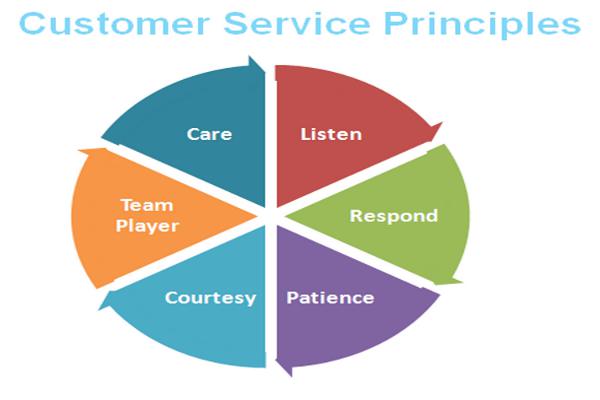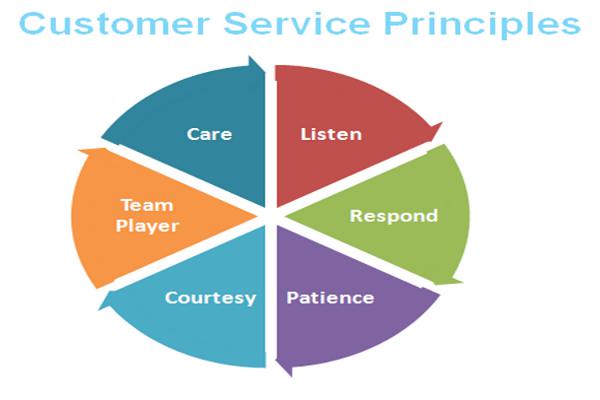People love good customer service, but really hate to get bad customer service.
Most people know the difference between good customer service and bad customer service. Your web design clients are no different. Treat them right, and they’re more likely to come back (and bring repeat business with them). Treat them wrong, and they’ll go away.

One aspect of customer service is common courtesy. Sadly, common courtesy seems to be going away. Let’s take a look at some of the statistics about courtesy.
We live in a rude society. We’re even rude when we work. According to statistics gathered by the Harvard Business Review, 98% of workers polled were treated rudely. (See The Price of Incivility by Christine Porath and Christine Pearson .)
In addition to courtesy, there are five other principles of customer service:


Customer service is important for any business, but it’s especially important for freelancers. What many businesses don’t realize is that most customers vote on the quality of your service with their dollars. Many of them won’t tell you that they’re unhappy. They’ll just stop doing business with you.
In this post, I’ll list the six customer service principles that every web designer should know.
Principle #1. Listen Carefully
First and foremost, you have a relationship with your client. Like any relationship, a client relationship takes work. Miscommunication can be a huge problem.
Effective communication is not just about what you say, but about what your client says. Too many designers are caught up in their own ideas and words to really hear what the client is trying to convey.
Learn to listen very carefully. Listen not only to the words that the client says but also to the ideas they are trying to get across to you. (They are not always the same thing.)
If you’re doing all the talking in your conversations with your clients, something’s already wrong with your communication style.
Principle #2. Respond Quickly
Another feature of today’s society is that everyone is accustomed to a quick response. The need for speed is what keeps fast-food restaurants and overnight delivery services in business. Your design clients are probably also accustomed to a quick turnaround.
One mistake many freelancers make is to put off answering a client’s email until they are ready to totally deal with the question or request. Sadly, this leaves the client with the impression that you don’t care.
A better response is to acknowledge a client or prospect’s message quickly and give them a time frame for a more complete response or offer to set up an appointment to discuss the issue with them.
Here’s an example of a quick response:
Dear Prospective Client,
Thanks for your inquiry into my web design services. I’m interested in learning more about your project. Can we set up a time tomorrow to discuss your project needs in detail? I’m available at 1:00 p.m. central time.
Sincerely,
Freelancer
With a response like that, you’ve acknowledged the prospective client’s interest. Yet, you’re not dropping what you’re doing. You’ve allowed yourself enough time to finish what you’re currently working on and still learn a little bit about the prospect.
Principle #3. Be Patient
You’re the web design expert, not the client. They contacted you because they know that you know what you’re doing.
Expect the client to be unfamiliar with the terminology. Expect the client to not really understand what can, and cannot be done. Be patient when you explain what you are doing to the client. Your client’s not stupid–they just aren’t a web designer.
I see web designer complaints about clients online all the time. While sometimes the anecdotes are well-justified, there are other times that it’s clear that the freelancer isn’t willing to talk to the client using terms he or she can understand.
Principle #4. Exercise Courtesy
Sadly, rudeness permeates our culture and even freelancers are not immune. One of the biggest competitive advantages freelancers have is that they can provide more personal attention to their clients. That advantage is destroyed if a freelancer behaves rudely.
You might think this:
That’s just not who I am I’m kind of rough around the edges–and my clients are used to that. Plus, I like to use colorful language. My clients know that and understand.
Is that you?
To that attitude I say…hmmm. Maybe.
It could very well be true that some of your clients are used to you being abrupt. Naturally, there are some people who are less sensitive to social niceties.
Ask yourself this–have you ever lost a client without knowing why? If you answered “yes,” it could be that your clients are not as understanding as you think they are.
As far as using curse words and other colorful phrases, remember that most people won’t speak up when it bothers them. They’ll just leave.
The bottom line is that no one loses a client by being thoughtful and polite.
Principle #5. Be a Team Player
Your best work occurs when you and the client work together to meet a common goal. You can’t please them without knowing what they want and need from the project. They can’t get what they want and need from the project without communicating with you.
Think about this: are you a team player or a lone freelancer?
The team mentality goes against the natural tendency of many freelancers, who view themselves as working alone. However, if you think of yourself as part of a team, you’ll naturally start to align yourself to the client’s needs and goals.
As a team member, you need to work hard to keep your part of the project going. Meet deadlines on time and notify your client quickly of anything that might slow you down.
If you don’t already have one, work to develop a team mentality. It can make a huge difference in your client satisfaction.
Principle #6. Care About Your Client and Their Project
This last principle gets to the heart of what customer service is all about. Your client is more than just a paycheck. Clients can tell when you don’t really care about them or their business. It comes out in small ways that you probably aren’t even consciously aware of.
You can also show your clients that you care by learning about their business. You can also show them that you care by asking them questions.
When the project is over, send an email or letter to the client thanking them for the opportunity to work on the project with them. You’d be surprised how many freelancers skip this step.
For more on the business of web design, please see:





